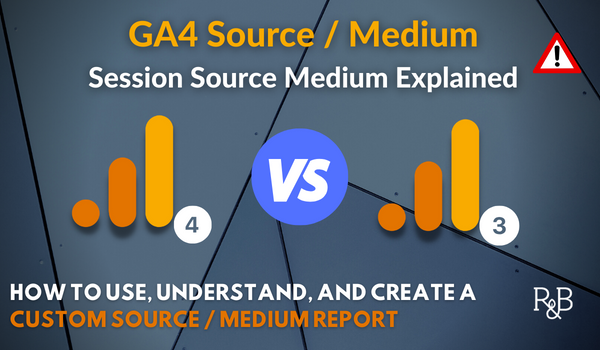The Function of Secondary Dimensions in Google Analytics: Interpretation and Insights for Advanced Data Analysis
The Function of Secondary Dimensions in Google Analytics: Interpretation and Insights for Advanced Data Analysis
Blog Article
Taking Advantage Of the Power of Additional Measurement in Google Analytics to Refine Your Marketing Technique and Drive Results
In the realm of digital marketing, the capability to make improvements strategies and attain concrete outcomes is vital for businesses aiming to remain competitive in today's landscape. Leveraging the power of secondary dimensions within Google Analytics opens a realm of possibilities for marketing experts looking for to obtain deeper insights right into individual behavior and customize their projects with precision. By discovering concealed patterns and refining audience segmentation, organizations can craft targeted methods that reverberate with their clients on an extensive degree. The potential to gauge campaign efficiency with a granular lens even more highlights the importance of utilizing this tool to drive success.
Understanding Second Measurements
When analyzing information in Google Analytics, recognizing second measurements is essential for obtaining deeper insights right into individual actions and internet site efficiency. Primary measurements provide standard details such as the variety of customers or sessions, yet second measurements use an even more in-depth view by enabling customers to segment and evaluate data better. By adding an additional measurement, marketing experts can refine their evaluation and reveal important patterns that might have or else gone undetected.
Additional measurements in Google Analytics can be put on numerous metrics such as website traffic resources, user demographics, and behavior flow. By integrating the main measurement of 'touchdown web pages' with the second measurement of 'device group,' online marketers can determine which tools are driving web traffic to particular landing web pages (what is a secondary dimension in google analytics). This details can help optimize web site style and web content for far better user experience throughout different tools
Studying User Behavior Patterns
To properly understand customer habits patterns, an extensive evaluation of information within Google Analytics is essential. By diving right into individual actions patterns, marketing experts can obtain useful insights into exactly how site visitors connect with their website, which pages are most interesting, and where possible bottlenecks or drop-off factors may exist in the conversion funnel. Google Analytics supplies a series of tools to evaluate customer behavior, such as actions flow records, occasion monitoring, and goal funnels.
Behavior circulation records offer an aesthetic depiction of how customers navigate with the site, showing the most usual courses individuals take as well as where they go down off. Event monitoring permits online marketers to keep an eye on particular interactions on the website, such as button clicks or video views, providing a much deeper understanding of customer engagement. Goal funnels track the steps users take towards completing a details objective, highlighting areas for enhancement in the conversion process.
Enhancing Target Market Segmentation
Upon analyzing individual actions patterns, marketers can further optimize their approaches by improving audience division methods in Google Analytics. Target market segmentation enables the classification of site visitors right into specific groups based upon various attributes such as demographics, habits, and interests. By using Google Analytics' additional dimensions, marketing experts can refine these sectors even better to obtain deeper understandings right into their target market's activities and preferences.
Enhancing audience division enables marketers to produce more targeted and individualized advertising my sources campaigns. By determining distinctive individual teams, marketers can customize their messaging, material, and supplies to better resonate with each section's one-of-a-kind attributes and needs. This level of customization can significantly enhance involvement, conversion rates, and overall marketing efficiency.
Moreover, through enhanced audience segmentation, marketers can much better understand the client trip and enhance touchpoints along the path to conversion. By analyzing just how various sections engage with the internet site and marketing networks, marketing professionals can identify opportunities to boost user experience, address pain factors, and eventually drive more conversions. Overall, refining target market segmentation in Google Analytics is a powerful method for making best use of advertising and marketing performance and driving lasting service development.
Tailoring Marketing Campaigns
Marketing experts can enhance their marketing campaigns by customizing web content and messaging to match the special attributes and needs of specific audience sections. By leveraging understandings from second dimensions in Google Analytics, online marketers can gain a deeper understanding of their audience's habits, preferences, and demographics.
Via the analysis of additional dimensions such as website traffic sources, gadgets made use of, or geographical location, marketing professionals can tweak their messaging to be a lot more impactful and appropriate. By tailoring advertising campaigns based on insights from additional measurements, companies can optimize the effectiveness of their efforts and eventually drive better ROI.
Gauging Project Performance

One crucial element of measuring campaign efficiency is tracking conversions. By establishing objectives in Google Analytics, companies can check details actions taken by customers as a result of the campaign, such as signing or making a purchase up for an e-newsletter. Recognizing the conversion rate and the conversion course can provide useful understandings into the performance of dig this different advertising channels and messages.
Moreover, assessing metrics such as click-through rates, bounce prices, and session period can assist marketers examine individual interaction and the influence of the campaign on site traffic. By combining key metrics with second measurements in Google Analytics, organizations can fine-tune their advertising and marketing approaches, maximize campaign efficiency, and drive better outcomes.
Final Thought
To conclude, utilizing the power of secondary dimensions in Google Analytics can offer beneficial insights into user actions patterns, enhance audience division, dressmaker advertising and marketing projects, and measure campaign efficiency. By using this feature effectively, organizations can refine their marketing methods and drive better outcomes. It is crucial for marketing professionals to take advantage of the data offered via secondary dimensions to make enlightened decisions and enhance their projects for maximum influence.

Report this page